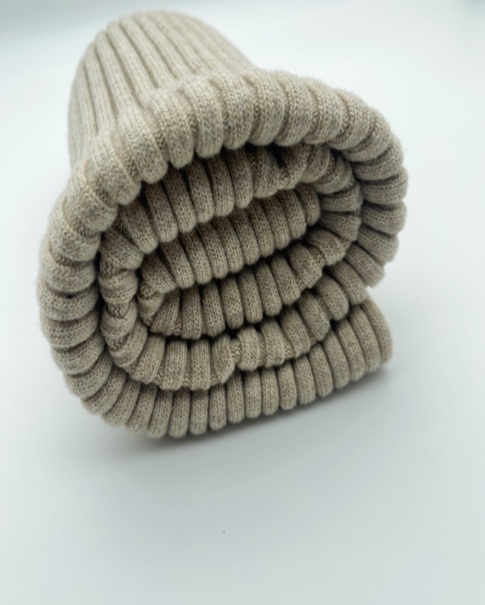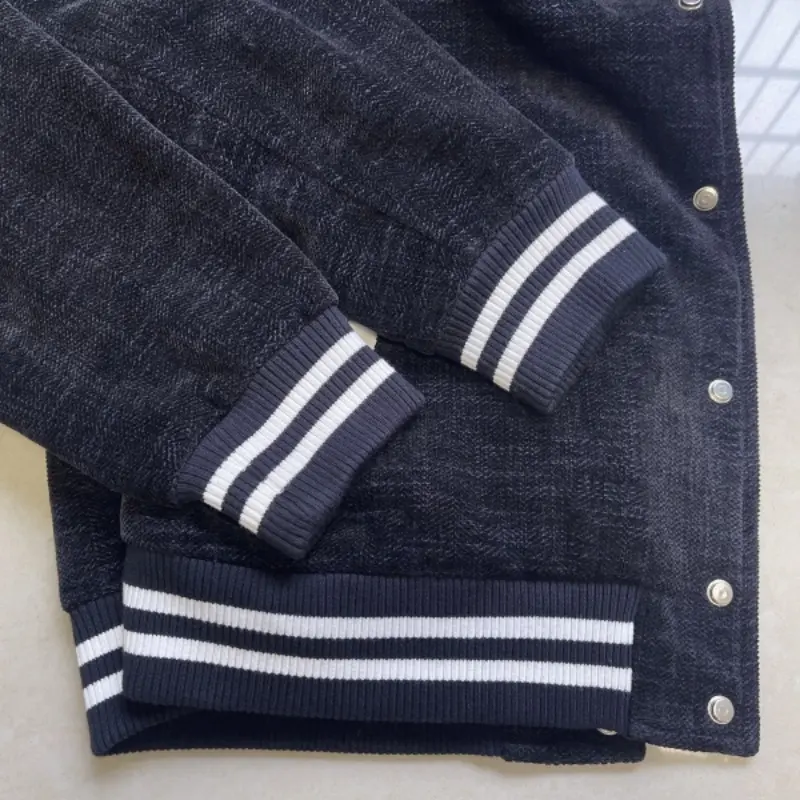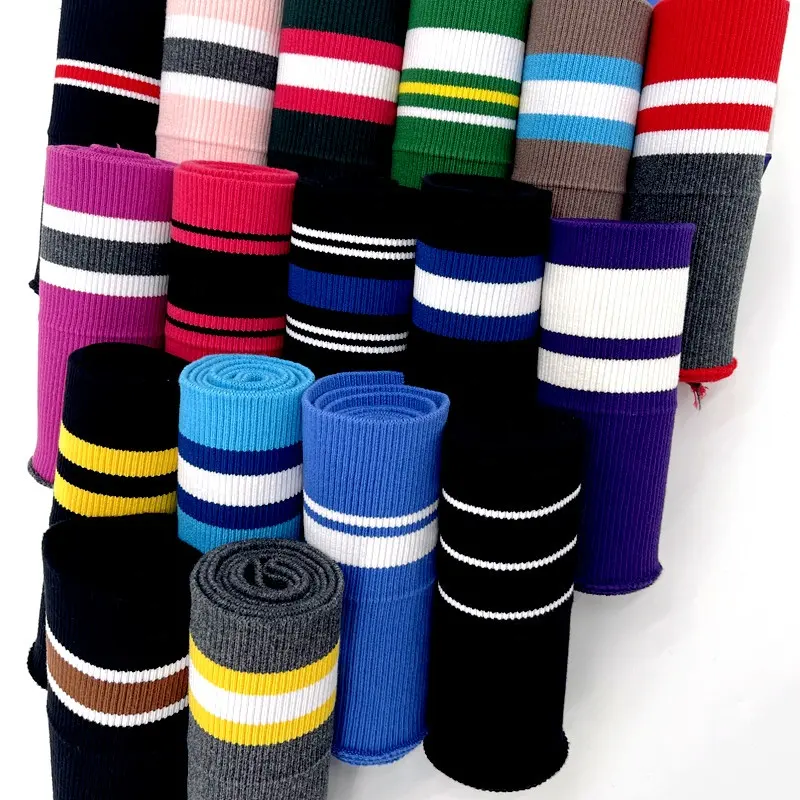
Learn more about rib knitting
Dec 10, 2024Rib Knitting is a common knitting technique in fabric production, known for its excellent elasticity, warmth, and close fit. It is widely used in fashion design. Below is a detailed introduction to rib knitting and its application in clothing accessories and design.
Rib knitting is a knitting structure that alternates knit and purl stitches (e.g., 1×1, 2×2) to create raised stripe patterns.
Characteristics:
· Both sides of the fabric exhibit a regular ridged texture.
· Excellent elasticity and stretch.
· Comfortable fit and good thermal insulation.
Common Specifications:
· 1×1 Rib: One knit stitch followed by one purl stitch, resulting in a fine texture.
· 2×2 Rib: Two knit stitches followed by two purl stitches, creating a looser texture.
· 3×1 Rib: Three knit stitches followed by one purl stitch, suitable for decorative designs.
· Collars: Commonly used for T-shirts and sweaters, enhancing elasticity and fit.
· Cuffs and Hems: Improves the garment's ability to seal and retain warmth.
· Waistbands and Pant Cuffs: The elastic structure of rib knitting makes it ideal for sportswear and casual pants.
· Full-Knit Garments: Such as fitted sweaters or dresses, providing comfort and design appeal.
· Ribbed Strips: Used as decorative elements for collars, cuffs, or hems.
· DIY Design: Hand-knit edging, decorative bands, etc.

· Excellent Elasticity: Ideal for areas requiring stretch.
· Durability: Long-lasting and resistant to deformation.
· Comfortable Fit: Snug but not restrictive, suitable for close-fitting garments.
· Decorative Appeal: Regular texture enhances design layers.
· Curling Edges: Ribbed fabric edges tend to curl and may require edge finishing.
· Pilling: Certain materials may pill after prolonged use.
· Cotton: Soft and comfortable, ideal for close-fitting clothing.
· Wool: Warm and suitable for winter sweaters or scarves.
· Spandex Blends: Enhanced elasticity, perfect for sportswear.
· Polyester: Durable and ideal for outdoor or heavy-use garments.
· Solid Colors: Simple and elegant, suitable for basic designs.
· Contrasting Colors: Adds vibrancy and interest with stripe contrast.
· Gradient Colors: Gradual transitions elevate the sophistication of garments.
· Twist Rib: Adds complexity and uniqueness through knitting techniques.
· Openwork Rib: Suitable for breathable spring and summer designs.
· Ribbing with Lace: A blend of softness and structure, ideal for women's wear.
· Ribbing with Plain Knit: Adds contrasting layers to the same garment.

· Washing: Hand washing or gentle machine cycles are recommended to avoid stretching.
· Drying: Lay flat to dry, avoiding hanging to prevent elongation.
· Storage: Fold and store to avoid long-term compression and loss of elasticity.
Use soft and elastic yarn to knit 1×1 or 2×2 ribbing for snug glove cuffs.
A simple straight-knit project; 1×1 ribbing creates a classic, warm scarf.
Upgrade old garments by adding ribbed cuffs to extend their lifespan and enhance design.
Ribbed fabrics made from recyclable yarns are gaining popularity.
Incorporating functional fibers (e.g., heating fibers) into rib knitting improves practicality.
Personalized colors and patterns in rib knitting are increasingly sought after by consumers.